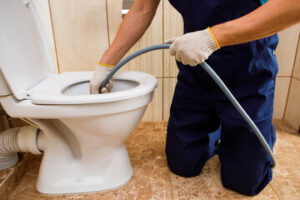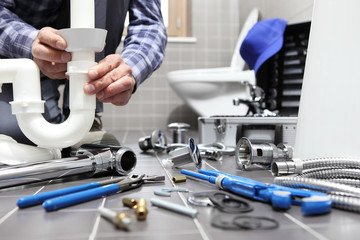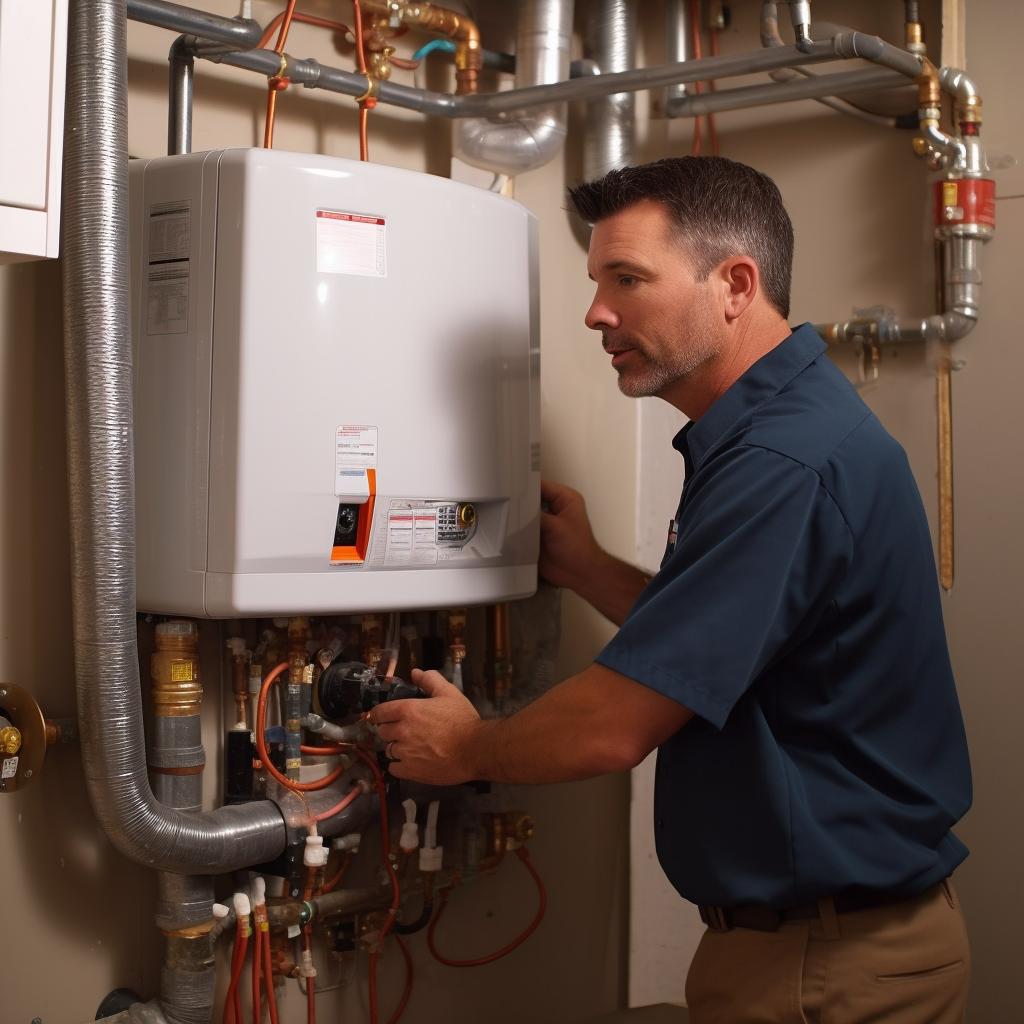Plumbers work in homes, businesses, and industrial settings. Their duties involve laying pipes, connecting fixtures, and ensuring they comply with local building codes.

Plumbers must have good customer service skills to listen to their client’s issues and concerns, explain complex plumbing problems in understandable terms, and provide accurate estimates for work. They also need to be physically strong and have good manual dexterity. Visit https://www.apexdoyourplumbing.com/efficient-tampa-emergency-plumber/ to learn more.
The AC float switch is a small but vital component that monitors the water level in your air conditioner’s drain pan. It detects when the water reaches dangerous levels, then shuts down the system as a safety measure. This prevents water damage and mildew, and it helps maintain the overall efficiency of your HVAC system.
If you notice that your float switch keeps tripping, it’s likely due to a problem with the electrical circuit or a malfunctioning sensor. To check the float switch, first turn off power to your air conditioning unit at the breaker panel. Then, remove the cover and inspect the float switch. Ensure that it has no visible water infiltration and that the float itself moves up and down freely without any obstructions.
You can also examine the electrical wiring to see if there are any obvious problems. If you find any exposed wires, make sure they are properly secured or taped. Also, look for any signs of corrosion on the float switch’s internal components. This may indicate a damaged seal and require a replacement.
Finally, you should check the float switch’s Specific Gravity (SG) rating to make sure it can function in your liquid of choice. For instance, a float switch designed for use in tanks of water will not work well in gasoline or other liquids with lower SG ratings.
There are a variety of different float switches available on the market, so it is important to select one that meets your specific application’s requirements. Generally, you will need to decide whether you want the float switch to activate when the water level rises or when it falls. Additionally, you will need to consider the tank size and depth, the mounting options, and the operating voltage and current.
To successfully perform their jobs, plumbers must have a wide range of skills. They must understand the science behind water flow and have a solid grasp of building regulations. In addition, they must be proficient with a variety of tools, from basic hand tools to more advanced equipment like pipe cutters and pipe threaders. Finally, they must be able to troubleshoot problems and figure out how to fix them quickly.
Check the Pump’s Bearings
The pump’s bearings are small parts that are critical to the performance of a pump system. They hold the load, allowing the pump to rotate, and they must be properly lubricated to prevent failure. They also need to be cooled to maintain their proper functioning and protect the system’s life. The good news is that a simple predictive maintenance program can help avoid bearing failure and the subsequent downtime of a hydraulic pump system.
There are many factors that can cause a bearing to fail and the most common are particle contamination, lack of lubrication, and misalignment. Almost three quarters of all bearing problems and failures can be avoided by implementing simple maintenance practices that include proper seal selection, lubrication and cooling systems.
A thorough inspection of the pump’s bearings will reveal any issues that are causing them to be overloaded or worn out. The first signs of a problem are usually a grinding noise or vibrations from the bearings. A closer inspection of the bearings will reveal if there is any debris in the bearing or the raceway, which could be causing overheating and excessive wear.
If the bearings are not lubricated correctly, there will be metal to metal contact which can cause extreme friction and overheating. In addition, the lubricant flow within the bearing will be limited which will reduce its effectiveness in cooling the inner components of the bearing.
The most effective way to check the state of a bearing is to perform a dynamic analysis. A method has been developed that accurately identifies the presence and types of defects within rolling element bearings using enveloped random vibration spectra. A pump’s motor-drive-end (MDE) bearing can be damaged due to overloading, improper lubrication and misalignment. When a damaged MDE bearing is replaced, the overall vibration levels in the radial direction decrease by up to 70%. Hydraulic performance including pump efficiency, water head and electric power consumption are also improved after the replacement of a defective MDE bearing.
Clean the Sump Basin
Sump pumps are designed to remove excess water from around the foundation of a building and pump it through a discharge line to prevent basement flooding. But if you have a sump pit that hasn’t been cleaned in a while it may become choked with sludge. That can cause the float switch to fail and the pump to stop working.
To avoid this problem, it’s a good idea to have your plumber clean the basin and pump on a regular basis. They’ll inspect the float switch and pump for signs of failure, as well as clean the pit and drain lines. They’ll also ensure that the sump pit is of the right size and that it has no defects.
A clogged pump can lead to a host of problems, from water damage to flooding of the basement or yard. In addition, loud rattling noises coming from the pump can be a sign of a defective float switch or broken impeller.
The first step in cleaning the pit is to shut off your sump pump and disconnect it from the discharge pipe. Then take your sump pump out of the pit and use a garden hose to spray it off. This will loosen up any dirt or debris that’s caked on and make it easier to clean the pump itself. You can also use a plastic scraper or putty knife to help scrape off any hardened residue.
After spraying the pump with a hose, you can start to clean it with a solution of vinegar and water. This is typically a safe and effective way to clean your sump pump, but you’ll want to do it outside in order to avoid getting sludge on your carpet or floor. Once you’re done, rinse the pump with the hose and let it dry.
While you’re at it, you might also want to check that the discharge line isn’t buried too close to your home’s foundation. If the line isn’t buried far enough away, it can recycle water back into the basin and overwhelm the sump pump. It’s also a good idea to have your professional bury the discharge line and install a product like IceGuard to protect it from freezing in winter.
Inspect the Discharge Line
Plumbers install and repair pipes, fixtures, appliances, and other systems that facilitate water, gas, and waste distribution in residential, commercial, and industrial settings. They also diagnose and troubleshoot issues like leaks, clogs, and malfunctioning components. Plumbing technicians often collaborate with other professionals, including construction teams and architects, to ensure that plumbing systems are integrated seamlessly into building projects and meet all relevant standards and regulations.
Plumber duties also include inspecting and testing systems to identify potential problems or violations of safety codes. They use specialized tools to perform these tasks, including video pipe inspection cameras and pressure gauges. They are also responsible for ensuring that all work meets industry and customer expectations.
A plumber’s work can be dangerous, particularly when working on sewage systems. Human waste contains dangerous microbes that can cause diseases like cholera, typhoid, and hepatitis. Plumbers must follow strict safety protocols when working on these systems, including wearing protective clothing and gloves, to minimize their exposure to infectious bacteria.
Other important responsibilities of a plumber are maintaining and repairing water heaters, installing dishwashers and washing machines, and connecting kitchen sinks to drain lines. In addition, they may also be called to replace or repair showerheads, toilets, faucets, and other components. Plumbers must have a wide range of skills to perform these duties, including knowledge of different materials and tools, as well as the ability to read blueprints and technical manuals.
Plumbing technicians also work on a variety of large-scale projects, such as installing drainage systems for hospitals and manufacturing plants. These jobs require them to travel to different sites and work with a wider variety of equipment and materials.
As a result, plumbing contractors must be comfortable working in a variety of environments and with a diverse set of clients. They must be able to communicate effectively, and provide customers with detailed explanations of their work and recommendations for how to fix any issues. They must also be willing to work overtime when necessary to respond to emergency calls, which can be disruptive to their personal lives. Finally, plumbing is a skilled trade that requires ongoing education to keep up with new technologies and techniques.



